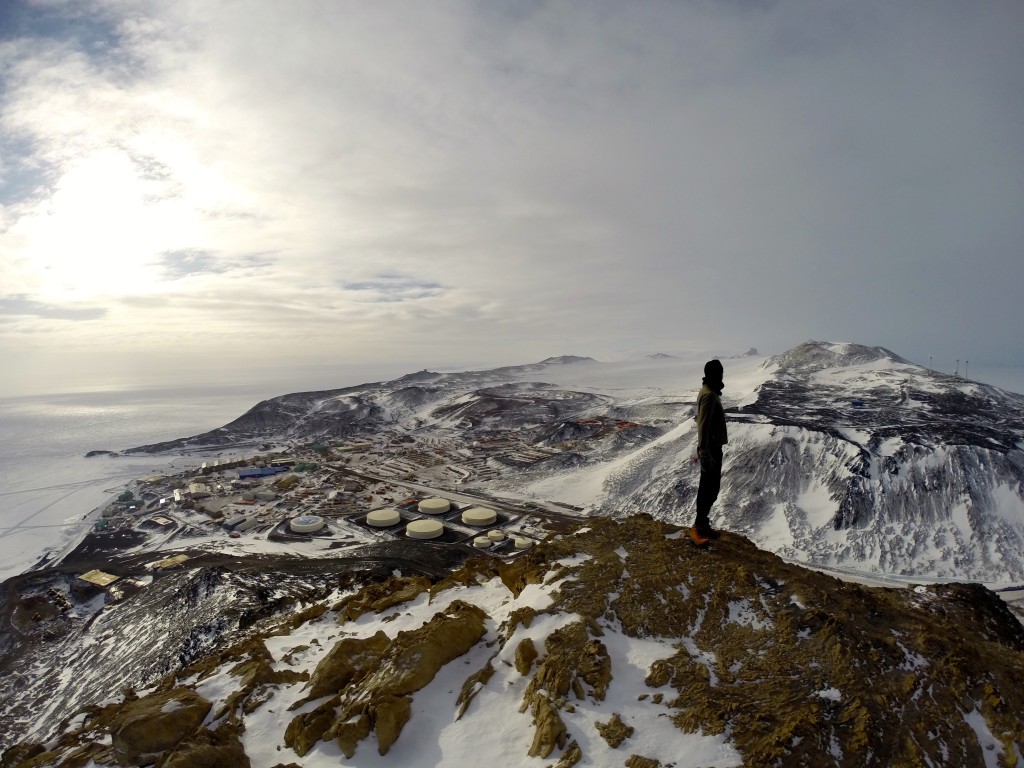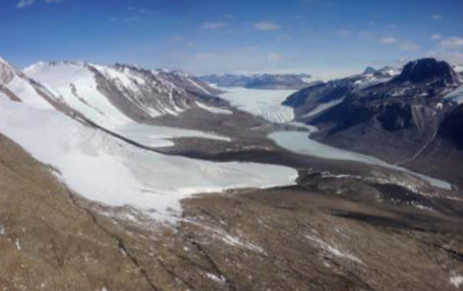Thanks to the Antarctica360 team for this great update from the field. You can follow their adventures at antarctica360.net.
Greetings from a cozy Scott Polar tent in the Royal Society Range, southern Victoria Land, Antarctica! As I sit writing this, it’s a balmy -13C outside, there is a 15 knot breeze and the midnight sun is shining (the next sunset is sometime in late February). We have stunning 360 degree views of the Transantarctic Mountains, the Ross Iceshelf, the Ross sea and beyond to Mt. Erebus and McMurdo station. All in all life is about as good as can get in this part of the world!
We are a team of four geologists from the University of California, Santa Barbara (three graduate students – Demian Nelson, Nick Browne, and Robert Holder; and Professor John Cottle) conducting fieldwork in the Transantarctic Mountains as part of a National Science Foundation-funded project to study the geologic history of the youngest ‘Ross Orogeny’ basement rocks.
Our fieldwork, based about 80km southwest of McMurdo station, is focused on mapping the distribution and collecting samples of the youngest plutonic rocks in this ancient mountain belt. Back in the laboratories in the Earth Science Department at UCSB, we will measure the geochemistry and age of these rocks at multiple locations along the orogen to understand the ‘when, how and why’ of subduction termination along this portion of the paleo-pacific margin of Gondwana.
Life in Antarctica is pretty simple – us, all of our gear, food and fuel for 2 months were deposited in the middle of our field area by helicopter, and except for a daily radio check-in with McMurdo station, we are left to our own devices. Our camp consists of two Scott Polar tents (one for cooking/eating and one for a bathroom) and a four small mountain tents for sleeping. We eat very well – highlights from the team so far include tubes of condensed milk, 4+ cups of Earl Grey tea per day, candy bar lunches, and food well past its “best by” date. FYI: pudding mix over a decade past due tastes exactly like it sounds. Our dinner menu is good despite our assortment of aged food. We’ve had all sorts of meals from Thai curry to burritos and occasional desserts. We made a batch of cookie dough and only cooked one cookie, apparently we all prefer the dough. Ultimately, living conditions are simple, but comfortable.
Working conditions are slightly worse as we battle to take copious notes in the frigid cold with clumsy gloves on and snot constantly leaking from our noses. We’ve hiked up hundreds of meters of steep scree and across miles of rolling landscape with packs full of rocks every day. The only deviation from our daily schedule is a few days of helicopter support. Essentially, a helicopter picks us up and drops us off at the foot of the outcrop of our choosing and later returns for us and our hundreds of pounds of samples to whisk us off across glaciers and valleys right back to camp. If a helicopter ride in Antarctica doesn’t put a smile on your face, nothing will.
In summary: life in Antarctica is good as longs as your hand warmers are still working, you’ve wiped the snot from your nose, the geology is good (and close), and you’ve got a hot dinner to look forward to… throw in a helicopter ride and some cookie dough and life is great.
Dinner is eaten, our water bottles are full of hot water so it’s time to head to bed under the midnight sun in preparation for another day of geologizing in the freezer.
~ the Antarctica360 team
![]() This work is licensed under a Creative Commons Attribution-NonCommercial-ShareAlike 4.0 International License.
This work is licensed under a Creative Commons Attribution-NonCommercial-ShareAlike 4.0 International License.



